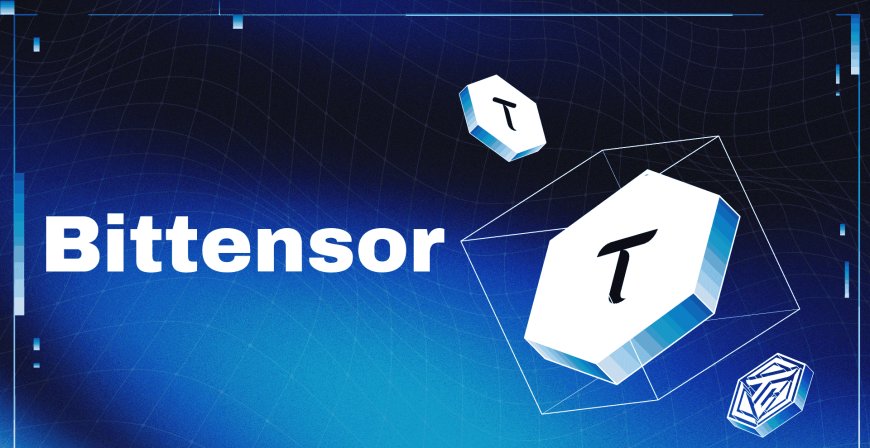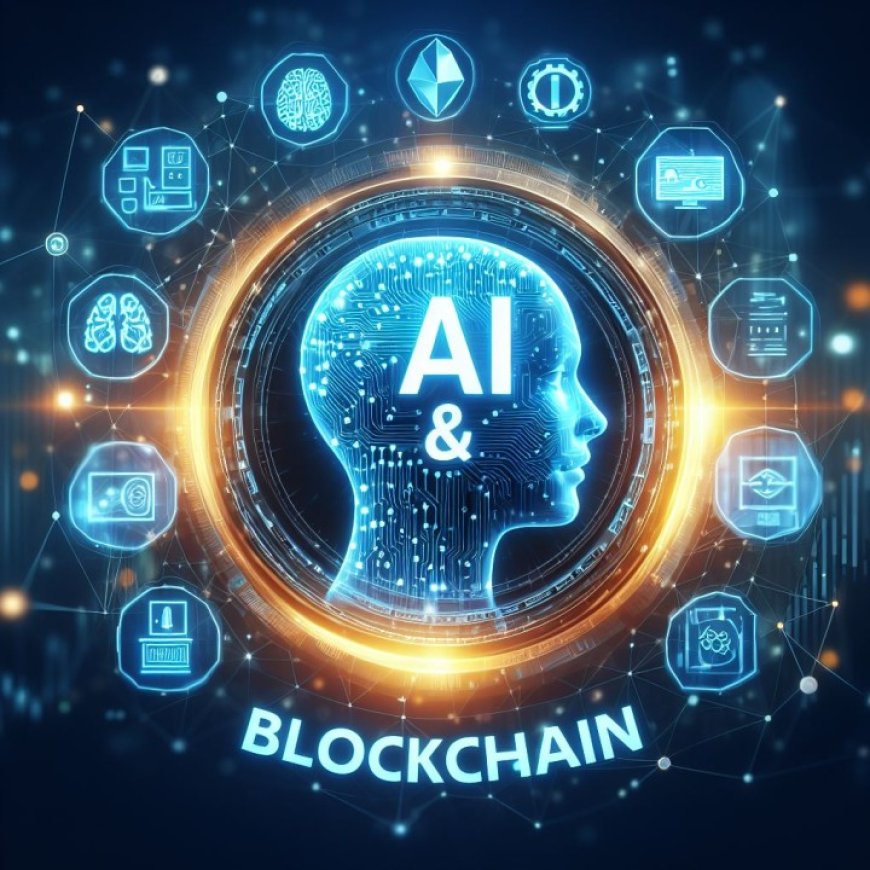The Fascinating World of Cellular Automata and BitTensor: Unlocking the Intersection of Computation, AI, and Synchronicity
The fields of blockchain and artificial intelligence (AI) are witnessing rapid innovation, but one particular area of exploration stands out for its potential to reshape both industries: cellular automata.

Introduction: A New Frontier in Computation and AI
The fields of blockchain and artificial intelligence (AI) are witnessing rapid innovation, but one particular area of exploration stands out for its potential to reshape both industries: cellular automata. These systems serve as models of computation, reflecting the complexity of reality itself through trillions of rule sets and starting patterns. By utilizing simple computer programs, these rules evolve into intricate, often visually stunning, patterns. This computational concept resonates with the emerging BitTensor ecosystem, which combines AI and blockchain technologies in a decentralized network. At the intersection of these two concepts lies an intriguing realm where complexity, synchronicity, and computation converge.
This article will explore how cellular automata and BitTensor are intertwined, how synchronicities play a role in these developments, and how the decentralized BitTensor ecosystem is paving the way for a new kind of blockchain-driven intelligence network. Through this lens, we will uncover the fascinating ways in which computation mirrors the very fabric of reality.
Understanding Cellular Automata: A Model of Reality
Cellular automata (CA) are computational models where simple rules are applied to a grid of cells, each of which can change states based on its neighbors. As these rules are repeatedly applied, complex patterns emerge, offering a unique glimpse into how simple systems can give rise to complexity. The work of Stephen Wolfram, who wrote a 1,200-page book on the subject, is a testament to the potential of CA. Though Wolfram's work has drawn mixed reviews, it has inspired a wide range of exploration into how these patterns can inform our understanding of the world.
One of the most intriguing aspects of cellular automata is that out of trillions of possible rule sets, only a small fraction lead to visually compelling or meaningful patterns. This process of sifting through possibilities is akin to deep-sea fishing for novelty and complexity, similar to venturing into the uncharted territories of space or the depths of the ocean. For those who explore cellular automata, there is a palpable thrill when a new pattern emerges, one that resonates with a sense of synchronicity—where seemingly random events align in a meaningful way.
Keith Singery and Synchronicity: A Journey of Discovery
One individual who has deeply explored the intersection of synchronicity and computation is Keith Singery, a prominent figure in the Bittensor ecosystem and host of the Bittensor Guru Podcast. Singery’s journey, much like cellular automata, is marked by synchronicities—events that feel too coincidental to be random, pointing instead to deeper connections between events. After leaving a corporate career at Aldi, a global grocery chain, Singery found himself on a new path, driven by spiritual growth and professional curiosity.
His move to Minnesota, guided by what he describes as a series of improbable events, was marked by a powerful synchronicity involving a book from his childhood library. This reinforced his belief in the importance of being open to the signals the universe sends. In Singery’s view, synchronicities act as guideposts, steering people towards the right decisions and, ultimately, their true path. This belief aligns closely with his involvement in the BitTensor ecosystem, where synchronicities—such as validator IDs aligning with addresses—further bolster his confidence in the network’s transformative potential.

BitTensor: A Decentralized AI-Driven Blockchain Ecosystem
At the core of BitTensor's unique value proposition is its decentralized approach to computation and intelligence. In a world where traditional currencies such as the dollar, yen, and pound are experiencing unprecedented devaluation, BitTensor offers a novel alternative. Unlike centralized companies, BitTensor operates without pre-sales, initial coin offerings (ICOs), or traditional marketing strategies. Managed by the OpenTensor Foundation, BitTensor's decentralized network is designed to distribute AI intelligence across nearly 30 operational subnets, each contributing to the broader network’s capabilities.
Validators on the network can use TAO, BitTensor’s native token, to access AI intelligence generated by these subnets. This setup creates a self-contained ecosystem where value is derived not from speculative external forces but from the utility of the network itself. In contrast to Bitcoin, which secures its network by validating transactions, BitTensor’s TAO token facilitates the purchase of intelligence from subnets, allowing users to tap into the collective computational power of the ecosystem.
Exploring Subnets: The Backbone of BitTensor’s Ecosystem
BitTensor’s decentralized architecture is powered by subnets—specialized environments where validators perform tasks such as model training, rule-set computation, and network maintenance. Each subnet is unique, with some offering ease of use for validators, while others demand more complex setups.
For instance, Subnet 8 stands out for its ease of use and long operational stability, having run for 27 days without needing manual intervention thanks to its auto-update system. This seamless functionality is a critical advantage as BitTensor prepares to launch new subnets, making it easier for validators to engage without worrying about complex maintenance issues.
On the other hand, Subnet 17 requires significantly more resources to operate, costing up to $10,000 a month due to the need for specialized hardware such as CPUs and GPUs. Despite the high operating costs, validators on this subnet continue to generate profits, further incentivizing participation in the network.
The OpenTensor Foundation has invested heavily in creating transparent documentation around these subnets, making it easier for validators to understand the incentive mechanisms and manage their participation effectively. Validators are rewarded not just for computing but for understanding the ecosystem, which drives further engagement and decentralization.
Dynamic Tow: Evolving the Incentive Structure
BitTensor's Dynamic Tow represents a pivotal shift in how the ecosystem incentivizes participation. In the past, BitTensor's reward mechanism was more oligarchic, favoring larger participants. With Dynamic Tow, however, a new market-driven model is introduced, where subnet tokens interact with TAO to determine emissions. This shift empowers smaller validators, allowing them to thrive in specific subnets and contribute to a more decentralized and fluid ecosystem.
Validators now have to make informed decisions about which subnets offer the most valuable digital commodities, driving deeper engagement and pushing the network towards even greater decentralization. Dynamic Tow incentivizes participants to educate themselves about the network, ensuring that the most knowledgeable contributors are rewarded.
Cellular Automata and AI: Uncovering Novel Patterns
Returning to cellular automata, Keith Singery’s insights into the computational potential of these systems take on new significance in the context of BitTensor. By building a subnet around CA, BitTensor opens the door to the exploration of novel and complex patterns that have never before been seen. Validators and miners compute different rule sets and starting patterns for cellular automata, generating arrays that AI will evaluate for novelty and complexity.
Over time, the network will evolve to allow miners to contribute outside of specific requests, with AI helping to determine the significance of new discoveries. This process is reminiscent of exploring a new continent or charting the depths of an uncharted ocean. Traditional AI companies would never allocate the necessary resources for such speculative exploration, but BitTensor’s decentralized model offers a real incentive for validators to participate in this open-ended research.
As more patterns are explored, validators may stumble upon phenomena that challenge our understanding of computation, biology, or even the fabric of reality itself. This kind of incentivized exploration pushes the boundaries of what we know and opens the door to entirely new applications—from computational biology to architectural design.
The Growing Role of Validators and AI Experts
BitTensor’s initial community was primarily crypto-focused, but it is now beginning to attract talent from the fields of AI and machine learning (ML). Companies like Neu Research and Tensor are already leading subnets, pushing the network forward as it transitions from being primarily driven by cryptocurrency to one powered by AI and ML expertise.
This shift represents a significant milestone for BitTensor, as its ecosystem grows more sophisticated and its applications more widespread. Validators who were once managing TAO holdings manually are now part of a larger, more efficient system, where delegation and subnets enable them to focus on innovation rather than administrative tasks. These validators are also reinvesting their earnings back into the network, fueling the continuous cycle of growth and improvement.
Conclusion: BitTensor’s Promising Future
As we stand at the intersection of blockchain, AI, and cellular automata, BitTensor offers a glimpse into the future of decentralized computation. The network’s focus on incentivizing exploration, decentralizing intelligence, and promoting synchronicity-driven decision-making makes it a compelling alternative to traditional centralized systems. By combining the computational power of cellular automata with the decentralized architecture of blockchain, BitTensor is charting a path towards a new kind of digital commodity—one where intelligence, rather than speculation, drives value.
With a vibrant community of validators, miners, AI experts, and researchers, the BitTensor ecosystem is poised for continued growth and innovation. As synchronicities guide participants and the network evolves, the future of decentralized intelligence has never looked more promising.
Call to Action: Stay informed and engaged with Leafight, where you can dive deeper into the intersection of AI, blockchain, and cellular automata. Join the BitTensor community today and be part of the next wave of decentralized intelligence innovation.
Source : @The Bittensor Hub.
















